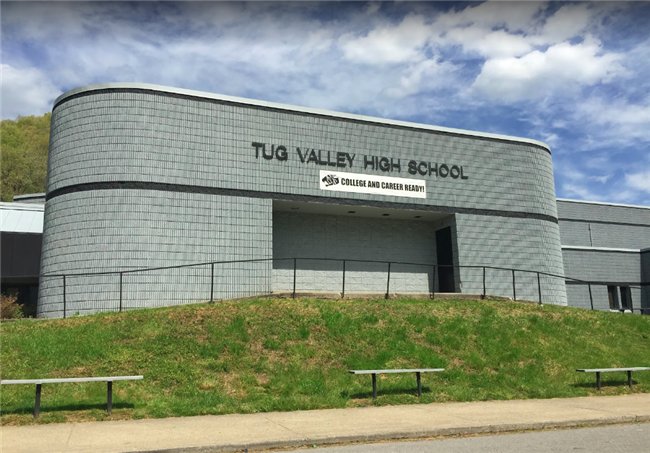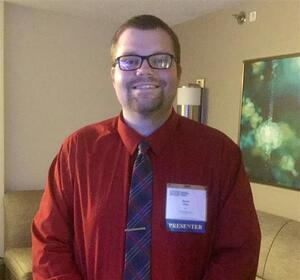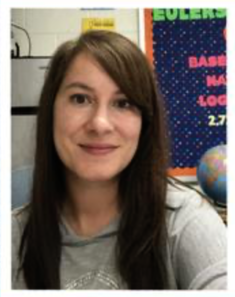Gradeless System
Lessons in how a gradeless system helped a group of math students feel more confident in their classrooms.
Math Students See Growth in Gradeless System
By Rodriquez Leonard and Jahana Martin, SREB
 Students go to school and earn
grades that are supposed to reflect their understanding and
mastery of a subject. But what if there is a way to accurately
assess student growth without applying standardized measurements
for student performance?
Students go to school and earn
grades that are supposed to reflect their understanding and
mastery of a subject. But what if there is a way to accurately
assess student growth without applying standardized measurements
for student performance?
Deemphasizing grades allows students to focus on learning and affords teachers more time for instruction. A team of math teachers at Tug Valley High School in Mingo County, West Virginia, sought a system to more accurately measure what students know and need to know to measure their mastery of the standards.
“We wanted grades to truly reflect students’ learning,” said Steven Alley, a 10th grade Math/Advanced Placement Statistics teacher at TVHS. “Students learned just enough to get the knowledge to pass the assessment. There was never a true mastery or application of the standard, just ‘pass the test.’”
The Power of Mistakes
Alley and Amy Salmons, an 11th grade Math/Advanced Placement Calculus teacher at TVHS, initiated a gradeless system before the COVID pandemic. They later found it was beneficial in sustaining remote learning, as well.
The new system encourages productive struggle. “Math has such a negative connotation. The fear of failure paralyzes performance and growth. We needed to build a culture that fosters the value of mistakes,” said Alley.
The team used Mathematical Mistakes: The Power of Mistakes and Struggle by Jo Boaler to help learn the science behind making mistakes and how the brain processes mistakes to create new learning.
“Every time we make a mistake our brain sends a message by growing a synapse,” said Alley. “When students productively struggle the brain fires neurons that cause it to grow, and this happens even when we are completely unaware if we are making a mistake. Knowing and understanding the science of making mistakes allows the students to grow,” he said.
 Growth is stifled when teachers
give students the answers, instead of allowing them to make
mistakes and grow their brains. “We shorten the learning span and
students never truly master the standards,” Alley said. He notes
that teachers must know the difference between a growth mindset
and a fixed mindset and understand what happens neurologically in
each mindset.
Growth is stifled when teachers
give students the answers, instead of allowing them to make
mistakes and grow their brains. “We shorten the learning span and
students never truly master the standards,” Alley said. He notes
that teachers must know the difference between a growth mindset
and a fixed mindset and understand what happens neurologically in
each mindset.
Buy-In
When Salmons and Alley saw how students and teachers could benefit from a gradeless system, they sought support from their administrators to make this transition. Initially, their principal was skeptical. And they had to change teachers’ mindsets about grading. They also needed support from parents. They did this, in part, by creating a transparent system where parents, students, and teachers could all access and monitor the student’s progress through an online system.
Even though it was hard work, taking the time to get this buy-in was vital to the success of the program because once they had it, students were better able to visualize their work and parents had access to their child’s progress and how it relates to the standards.
Going Gradeless
 The math department piloted this
system for one year. When they were ready to launch, they
notified parents and uploaded student profiles onto the online
platform. “We explained in depth to the parents that there are no
grades for the first four and a half weeks. This is the largest
part of the process. Once parents change their thinking about
grades and look at the growth of their students, they then see
the value of our approach with this tool,” said Salmons.
The math department piloted this
system for one year. When they were ready to launch, they
notified parents and uploaded student profiles onto the online
platform. “We explained in depth to the parents that there are no
grades for the first four and a half weeks. This is the largest
part of the process. Once parents change their thinking about
grades and look at the growth of their students, they then see
the value of our approach with this tool,” said Salmons.
Students immediately had access to their digital portfolios — a record of their work easily accessed by an authentic audience (teachers, parents, etc.). This approach to recordkeeping allows the teachers to truly measure growth and identify where students are according to the standards. Parents also had easy access to their child’s work.
 Alley explains that this new
process allows teachers to change the students’ perception of
math and build their confidence in their ability to master the
standards — while building relationships with students. Teachers
can focus less on students’ grades and focus more on learning
from mistakes, creating a more positive environment and changing
the view of math.
Alley explains that this new
process allows teachers to change the students’ perception of
math and build their confidence in their ability to master the
standards — while building relationships with students. Teachers
can focus less on students’ grades and focus more on learning
from mistakes, creating a more positive environment and changing
the view of math.
“Once students, parents and teachers get accustomed to the process of not receiving a letter grade, immediately, they adjust and school continues normally,” Salmons said.
“Student learning is measured by standard performance, not by compliance. In this system, students can access and be accountable for their learning through their mastery of the standards,” said Alley. Students meet with teachers weekly and discuss their progress and how they perceive their performance. This gives the students voice and ownership of their work.
Contacts: Steven Alley, sdalley@k12.wv.us; Amy Salmons, asalmons@k12.wv.us

